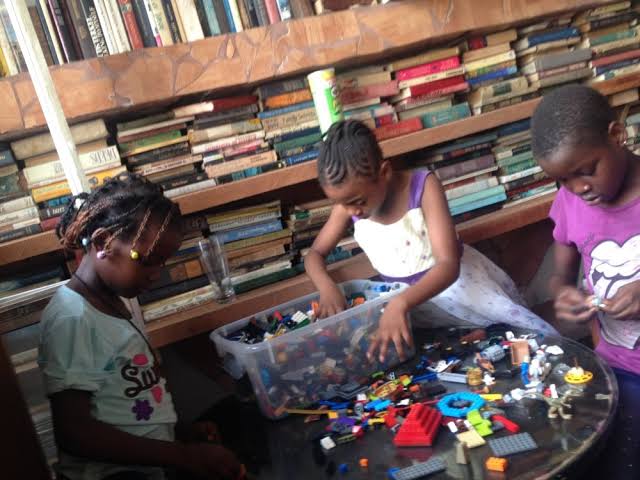Two of the most challenging jobs in the world are raising a human being and being the best parent possible for them. Raising a child without implementing specific rules is not enough, however. The job has to be done in such a way that when you’re “done,” you’ve already created a loving, responsible, self-sufficient, kind-hearted, thoughtful, empathic, and respectful persona. Hence, it is ideal to lower the bar a little and start learning how to be a better parent.
Don’t get me wrong; mistakes will be made along the way. You won’t be perfect, regardless of how hard you try.
And no matter how great a job you do, your child may have issues beyond your control. Remember, they will be born with a will of their own that may conflict with yours.
Nevertheless, carrying out the following tips will provide you with the best chance to create a fantastic human being of whom you can be proud.
1. Listen
Children are interesting, funny, and curious, and they look upon you — their parent — as a hero. They have a wealth of knowledge and a great perspective on life. Listening to your child is one of the greatest gifts you can offer. They will feel valued and grow up knowing that they matter.
It’s not always easy to listen. Sometimes, children will carry on without saying anything profound. But if they believe you’re listening, they will feel important and provide you with amazing nuggets of information.
Note: Make a real and honest effort when you are listening to your children. Don’t listen while multitasking and muttering, “Hmm, that’s nice, dear!”
In his book, The Road Less Traveled, M. Scott Peck, M. D., wrote, “You cannot truly listen to anyone and do anything else at the same time. True listening, total concentration on the other, is always a manifestation of love.”
2. Provide Unconditional Love
Providing unconditional love creates a secure bond and a healthy person. Knowing you have your parent’s love no matter what makes a fantastic anchor for the child. They know they can mess up and still be loved. They know they can come to you with their worst offenses, and while you might get upset, your love will remain intact.
3. Teach by Example
Children watch and listen to you very closely. You may think that they’re not paying attention, that they’re in the other room, playing with their Legos, but they are listening.
If you want to teach your child, lead by example.
For instance, if you want them to eat healthy foods, eat healthy foods. If you don’t want them to pick up bad habits, like smoking, don’t smoke. If you don’t want them to be violent, be peaceful. If you wish to raise a trustworthy child, keep your word.
If you want to teach your child how to communicate, speak kindly and listen with an open heart. Whatever you want your child to learn, be willing to do it yourself. You are the best teacher for the job!
4. Spend Time Together Often
Life is full of work, errands, get-togethers, appointments, etc. It’s easy to get lost in all the hustle and bustle and not leave enough time for your children.
You can avoid being an absentee parent by spending time with your children every day. Talk to them about anything; ask about their day. If you can, allow them to help you with household chores. E.g., cleaning, folding laundry or stacking dishes in the dishwasher.
5. Follow Through
Following through creates trust in your child. They will believe that what you say you’re going to do will genuinely be done.
Children are very perceptive, they are always watching and listening. You see, when parents say things and end up not doing them, they become empty threats — words without any back-up.
Following through is critical in raising a responsible adult. You need to be kind, clear, and concise.
The child has to know that you mean business. If you tell them they’re not having a sleepover unless their homework is done, then the homework better be done. If it’s not, there will be no sleepover. Just make sure that whatever the consequences are for your kids’ bad behavior, you can back it up with action.
6. Focus on Positive Qualities
There is an old American proverb that says, “The squeaky wheel gets the grease/oil.” It is used to communicate the notion that the most clamorous problems are the ones that will more than likely get noticed.
If your child is well-behaved and minding their own business, you might be tempted to let them be. On the other hand, if they are acting out and making a raucous, they may get a lot of attention.
This sends the message that the kids have to misbehave before you focus on them. Bad attention, after all, is better than no attention.
Positive attention is paramount. If you only pay attention to your child’s negative behavior while ignoring their positive qualities, you are robbing them the chance of being their best selves.
7. Apologize When Necessary
We all make mistakes. There are some parents, however, who don’t apologize no matter how many mistakes they make with their children. They incorrectly assume that apologizing is a sign of weakness.
“Apologizing to your child is a sign of respect for the overall relationship you have with him.”
Making mistakes is human. I guarantee you that your child will not think less of you. If you fail to apologize, you miss out on a teachable moment about the importance of taking responsibility.
You may find it difficult to apologize because you feel superior or fear losing your authority. In truth, your child will see you as a human, and they may feel closer to you than ever.
Show your kid that no one is perfect, that you all make mistakes in life. Apologies can correct so many wrongs. Just a few simple words can cure the worst transgressions.
8. Allow Kids to Be Who They Want to Be
Allow your child to be who they want to be, not who you think they should be. After all, it is their life — their journey. You’re just there to watch and provide guidance whenever necessary.
9. Grow Along With Your Children
Children grow and evolve, just like us. It’s important to grow with them and adjust the way you discipline and talk to them.
For example, if your 4-year-old misbehaves by bending the truth or whining, you may ignore their antics and stay calm with regards to the lying. This is common for this age group.
If you’re dealing with an 8-year-old, your child understands the difference between right and wrong and looks to you for guidance.
Meanwhile, teens need to be addressed in another way. That is a difficult and challenging age group — one that deserves great care and attention. You cannot talk to your 16-year-old as if they were still 9!
10. Validate Their Feelings
While growing up, lots of things that generate a multitude of feelings happen. As a parent, you want to take the time to validate your child’s feelings. Don’t be dismissive and act like their feelings are not important.
If you do not validate your child’s feelings, they will think that their feelings are unimportant and learn not to share them at all. You don’t want that, of course.
You want to have your finger on the pulse of their emotions. You need to make sure they come to you in the future when heavier things come down the pipe. Listen and communicate with compassion.
11. Ask Open-Ended Questions
This not only works with children but also with adults. For example, when you ask someone, “Do you like your job?”, they may answer yes or no. But if you say, “What do you like or dislike about your job?”, you’ll get a lot of information.
Open-ended questions are the key to getting more information than you’ll know what to do with!
Final Thoughts
Being a good and responsible parent can be one of the most rewarding tasks in the world. It is not effortless, however. It takes a lot of work and patience.
Implementing the above-mentioned 11 suggestions won’t guarantee a perfect family, but you will have a solid base to build and grow upon.
Your child is a reflection of you. What do you wish them to reflect?


























